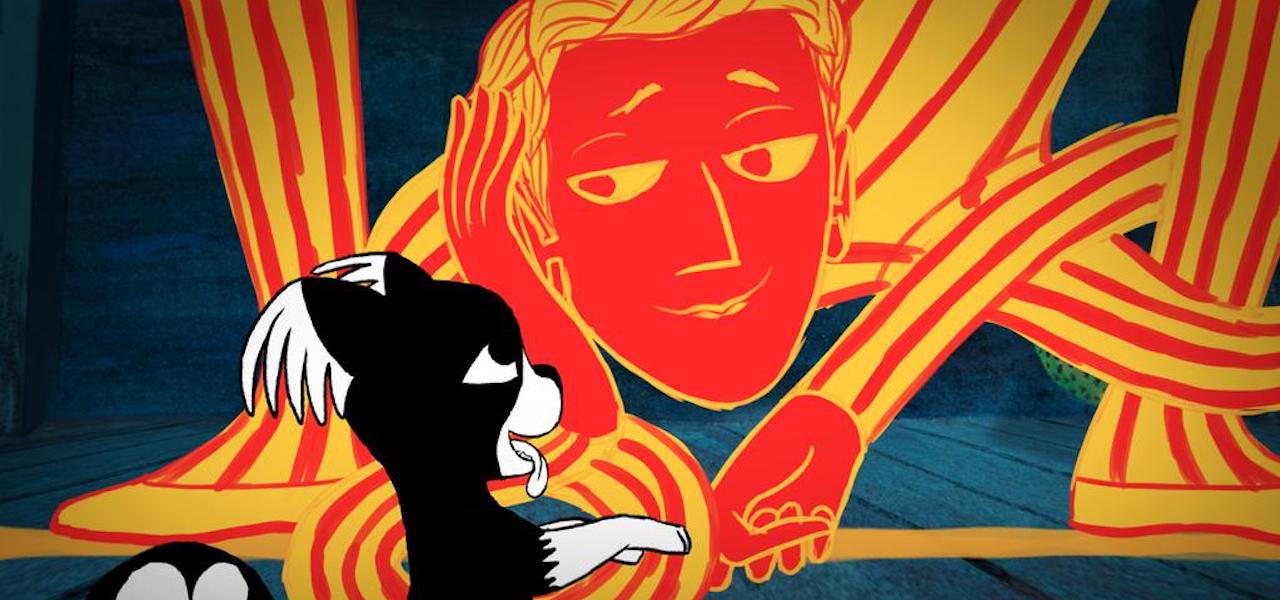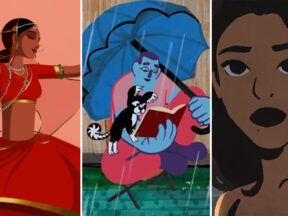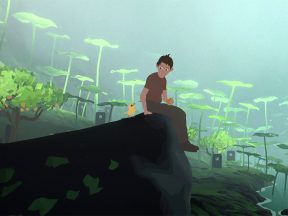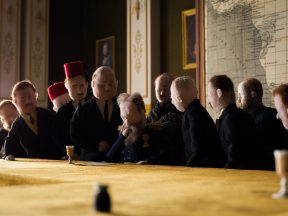

Here Are Six Indie Animated Features That Deserve An Oscar Nomination This Year
As feature animation continues to mature and expand beyond the walls of Pixar and Disney, the challenge of selecting animated feature nominees for the Academy Awards becomes all the more daunting. This year, in particular, there is no shortage of strong candidates among the 32 qualified films (a record).
The frontrunners from the realm of international studio films are Jérémy Clapin’s I Lost My Body (a smart, poetic, and funny exploration of identity, grief, love, and courage) and Makoto Shinkai’s Weathering with You (a supernatural tale of teenage traumas and desires set against mysterious weather patterns). There are also a handful of films that have received international festival acclaim, and which warrant serious consideration from voters. We profile them below:
Away, Gints Zilbalodis, Latvia
Zilbalodis is a young Latvian animator who has been making ambitious short films since he was in high school. His shorts have met with mixed success at festivals, partially because they have perhaps followed a live-action template a tad too much. Still, you could always feel his talent.
That is finally on full display with his debut feature, Away. Animated, edited, scored, and produced by Zilbalodis, the film tells a gripping story in a lusciously animated world. The dialogue-free plot follows a boy, who has been stranded on an island, as he attempts to flee a giant dark spirit and find his home.
This minimalist, tense, and quiet film is filled with gorgeous, emotive scenes (notably the spectacular Mirror Lake chapter) as the boy (and his small bird sidekick) desperately flee what appears to be some giant variant of the Grim Reaper. The ending is wonderfully oblique and open-ended.
Marona’s Fantastic Tale, Anca Damian, Romania/France/Belgium
At death’s door after being struck by a car, a small dog remembers her various owners (a tightrope walker, a construction worker and his facile spouse, and a young girl and her family). Though they are all different, and sometimes not so pleasant, the dog loves them all. And that’s really what is at the core of the film: love. That we should strive to see the beauty in everyone. A tad naïve, perhaps, but that’s certainly a vibe we could all use these days.
What elevates the work beyond being a trite little tear-fest is the vibrant animation and backgrounds. Matching the unpredictable and erratic life of our canine protagonist, the backgrounds are intense, vivid dreamscapes that capture a raw, fearful, and occasionally wondrous existence.
Happiness, as the film’s closing song suggests, is a fleeting thing for which we should jump as high as we can. Those are certainly words we should bear in mind in any age, but especially in our current era of dysfunction and strangeness.
Children of the Sea, Ayumu Watanabe, Japan
As a young girl, Ruka encounters a ghost in the water at the aquarium where her dad works. Years later, at the start of summer break, the feckless schoolgirl heads back to the aquarium and meets two mysterious boys, Umi and Sora. The boys were raised in the sea by dugongs. Drawn to them, Ruka gets caught up in a complex mystery about the disappearance of sea creatures.
Children of the Sea is a trippy, visually explosive piece of supernatural philosophy that explores time, memory, and identity, alongside our connection (or lack thereof) to nature and each other. Dotted with some astonishing sequences that feel like they fell out of an experimental film, Watanabe’s feature is an aquatic version of 2001: A Space Odyssey. Poignant and at times perplexing, Children of the Sea uses the vastness of the sea to remind us how little we often see and know of our world and universe.
The Swallows of Kabul, Zabou Breitman and Éléa Gobbé-Mevellec, France/Luxembourg/Switzerland
In 1998, Zunaira and Mohsen, a young couple in Taliban-controlled Kabul struggle to navigate a violent, harsh, and paranoid society. They hope that their love, passion, and idealism can one day open the path for a better future. Those dreams are brought to an abrupt end by a senseless act of violence.
The Swallows of Kabul, which is based on the eponymous 2002 novel by Yasmina Khadra, doesn’t always exploit the full potential of the medium, and drops in some soap-opera tropes. That said, it is animated in beautiful and delicate watercolors, through which the brutality of the Taliban is depicted with some distance. Paradoxically, the softness of the style actually heightens the tension of the characters’ interconnected stories.
This is a morally complex work that is both tragic and mildly hopeful (“One must live,” says Zunaira) as it cautions us about the horrifying consequences of extremist attitudes. It remains a potent and relevant story about the violent suppression of women — and people in general. As the world veers towards incomprehensible attitudes regarding gender, sexuality, race, and ideology, it feels timely.
This Magnificent Cake!, Marc James Roels and Emma De Swaef, Belgium/France/Netherlands
This Magnificent Cake! is a multi-layered work set in the late 19th century, during Belgium’s colonization of the Congo Basin in West Africa. In five chapters, the experiences and effects of colonization are shown from a multitude of perspectives: a king (based on Belgium’s King Leopold II), slaves, a crooked businessman, and an army deserter.
This astonishing, sensitive, and original stop-motion work explores the dreams and lives that are crushed by the disastrous, brutal, and inhuman effects of colonialism on the innocent and the guilty, the good and the awful. With dashes of magic realism, Roels and De Swaef place us in a sort of dreamscape where we’re never quite sure where we are or whether the characters’ experiences are real. It’s wonderfully disorienting.
Buñuel in the Labyrinth of the Turtles, Salvador Simó, Spain/Netherlands
Inspired by the early life and art of filmmaker extraordinaire Luis Buñuel, this film tells of how he struggled to make his documentary Land Without Bread (1933) after his scandalous surrealist collaborations with Salvador Dalí, Un Chien Andalou (1929) and L’Age D’Or (1930), left him broke. Incredibly (and this is true), a good friend promised to fund Buñuel’s new film if he won the lottery — which he did.
As Buñuel and colleagues set out to film the inhabitants of a remote mountain village in Spain, the filmmaker drifts between production struggles, memories of his stern religious upbringing, and an assortment of hallucinations. While some scenes feel rushed and the dialogue occasionally veers into cliché, the restrained animation and design aptly reflect the near-“normality” of Buñuel’s films, in which the real and surreal often overlap (for example, see Buñuel’s masterpiece, The Exterminating Angel).
Grumbles about storytelling choices aside, Buñuel in the Labyrinth of the Turtles is an engaging and imaginative take on the life of one of the most surprising, diverse, and provocative filmmakers in cinema history. Without drifting into polemics, the film also touches upon mortality and religion (favourite Buñuel topics) while pondering the function of the artist within society — especially a society with streaks of intolerance.
(Image at top: “Marona’s Fantastic Tale.”)

.png)


